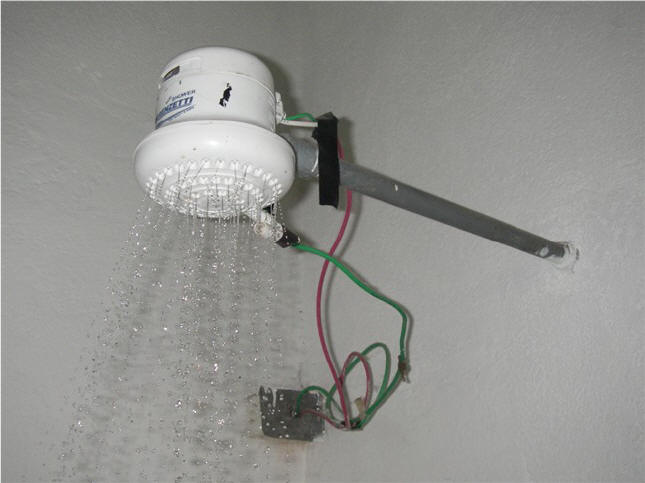- Joined
- Jun 22, 2011
- Messages
- 2,431
- Points
- 83
I'm tired of never being able to get the shower temperature exactly right so I decided to build a DIY temperature controller.
I intend to use an Arduino, a temperature sensor (maybe this one) inside the "wet chamber" of the shower to measure water temperature (will need to use some glue or epoxy on those pins to insulate) and an LCD to show water temperature and set temperature. I'm planning on using the PID algorithm on the controller and some capacitive buttons inside the plastic box to avoid shocks.
Now the problem is that I don't have much experience with AC and I don't know the best way to modulate it. I first thought about using PWM on an SSR like this but have been told it won't handle a proper PWM frequency (no idea what a proper frequency would be) and that I should use an SCR or Triac instead because of some sort of phase synchronization issue. I've read up the basics on SCRs and Triacs but I still have no idea how to make them work. All I have found are some dimmer circuits but they all seem analog and not linear at all (I'd like to able to get a linear range from completely off to full power).
I know this is kinda off topic but this forum has some very knowledgeable people and I'm sure someone here will be able to point me in the right direction.
Thanks!
I intend to use an Arduino, a temperature sensor (maybe this one) inside the "wet chamber" of the shower to measure water temperature (will need to use some glue or epoxy on those pins to insulate) and an LCD to show water temperature and set temperature. I'm planning on using the PID algorithm on the controller and some capacitive buttons inside the plastic box to avoid shocks.
Now the problem is that I don't have much experience with AC and I don't know the best way to modulate it. I first thought about using PWM on an SSR like this but have been told it won't handle a proper PWM frequency (no idea what a proper frequency would be) and that I should use an SCR or Triac instead because of some sort of phase synchronization issue. I've read up the basics on SCRs and Triacs but I still have no idea how to make them work. All I have found are some dimmer circuits but they all seem analog and not linear at all (I'd like to able to get a linear range from completely off to full power).
I know this is kinda off topic but this forum has some very knowledgeable people and I'm sure someone here will be able to point me in the right direction.
Thanks!




